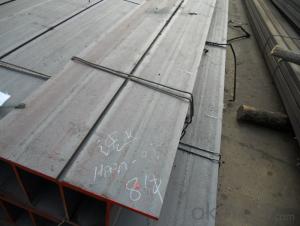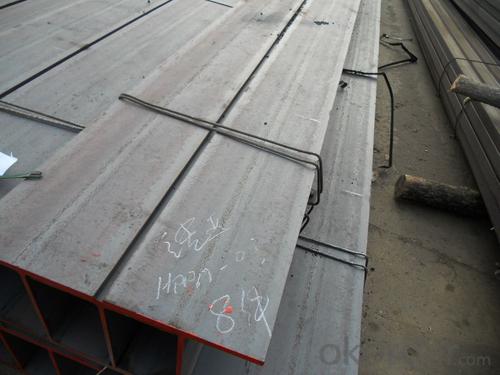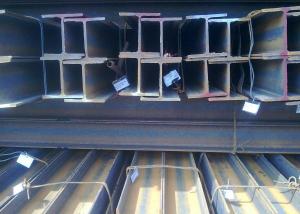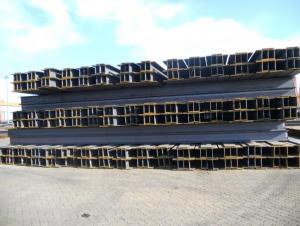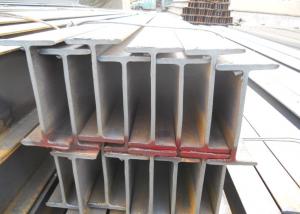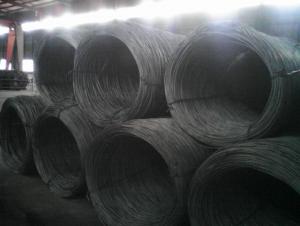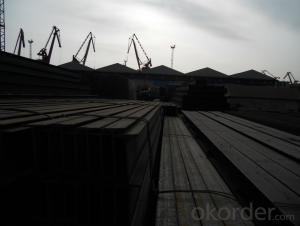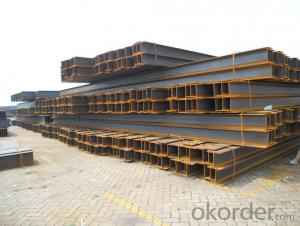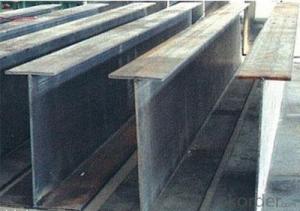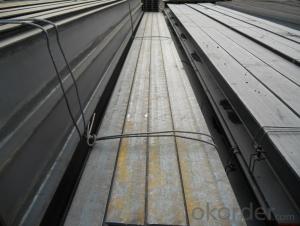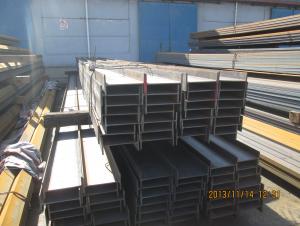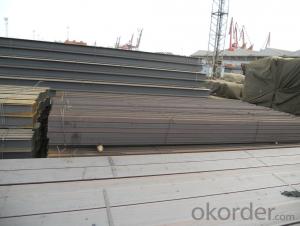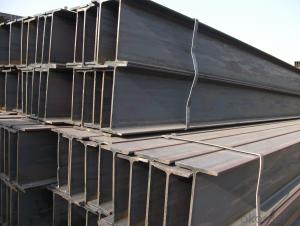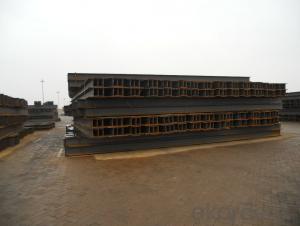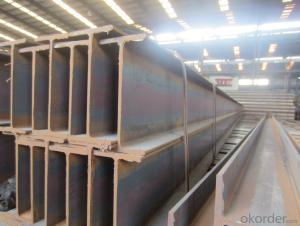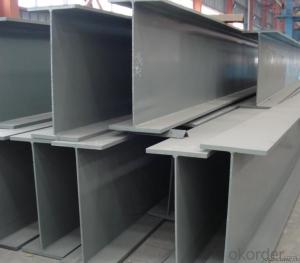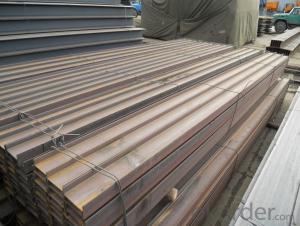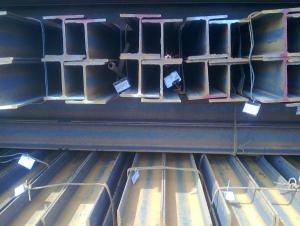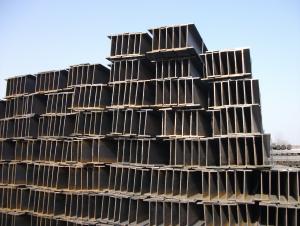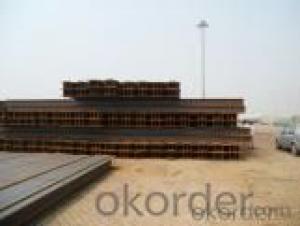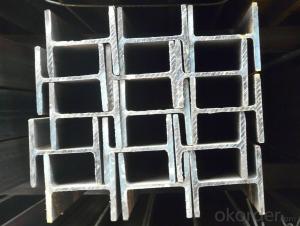JIS Standard Hot Rolled Steel H-beam Bar
- Loading Port:
- Shanghai
- Payment Terms:
- TT or LC
- Min Order Qty:
- 25 m.t.
- Supply Capability:
- 1000 m.t./month
OKorder Service Pledge
OKorder Financial Service
You Might Also Like
Product Description:
OKorder is offering Structural Steel H-beam JIS Standard at great prices with worldwide shipping. Our supplier is a world-class manufacturer of steel, with our products utilized the world over. OKorder annually supplies products to European, North American and Asian markets. We provide quotations within 24 hours of receiving an inquiry and guarantee competitive prices.
Product Applications:
Commercial building structure ;Pre-engineered buildings; Machinery support structure; Prefabricated structure; Medium scale bridges; Ship-building structure. etc.
Product Advantages:
OKorder's Structural Steel H-beam JIS Standard are durable, strong, and resist corrosion.
Main Product Features:
· Premium quality
· Prompt delivery & seaworthy packing (30 days after receiving deposit)
· Corrosion resistance
· Can be recycled and reused
· Mill test certification
· Professional Service
· Competitive pricing
Product Specifications:
1. Standard: JIS
2. Grade: SS400
3. Length: 12m
4. Invoicing on theoretical weight or actual weight as customer request
5.Payment: TT or L/C
6. Sizes:
H x B
(mm)
| T1 | T2 | JIS Weight
(kg/m)
| GB Weight
(kg/m)
|
100*100 | 6 | 8 | 16.9 | 17.2 |
125*125 | 6.5 | 9 | 23.6 | 23.8 |
150*75 | 5 | 7 | 14 | 14.3 |
148*100 | 6 | 9 | 20.7 | 21.4 |
150*150 | 7 | 10 | 31.1 | 31.9 |
175*90 | 5 | 8 | 18 | 18.2 |
175*175 | 7.5 | 11 | 40.4 | 40.4 |
198*99 | 4.5 | 7 | 17.8 | 18.5 |
200*100 | 5.5 | 8 | 20.9 | 21.7 |
194*150 | 6 | 9 | 29.9 | 31.2 |
200*200 | 8 | 12 | 49.9 | 50.5 |
248*124 | 5 | 8 | 25.1 | 25.8 |
250*125 | 6 | 9 | 29 | 29.7 |
244*175 | 7 | 11 | 43.6 | 44.1 |
250*250 | 9 | 14 | 71.8 | 72.4 |
298*149 | 5.5 | 8 | 32 | 32.6 |
298*201 | 9 | 14 | 65.4 | |
300*150 | 6.5 | 9 | 36.7 | 37.3 |
294*200 | 8 | 12 | 55.8 | 57.3 |
300*300 | 10 | 15 | 93 | 94.5 |
346*174 | 6 | 9 | 41.2 | 41.8 |
350*175 | 7 | 11 | 49.4 | 50 |
340*250 | 9 | 14 | 78.1 | 79.7 |
350*350 | 12 | 19 | 135 | 137 |
400*200 | 8 | 13 | 65.4 | 66 |
390*300 | 10 | 16 | 105 | 107 |
400*400 | 13 | 21 | 172 | 172 |
446*199 | 8 | 12 | 65.1 | 66.7 |
450*200 | 9 | 14 | 77.9 | 79.5 |
440*300 | 11 | 18 | 121 | 124 |
496*199 | 9 | 14 | 77.9 | 79.5 |
500*200 | 10 | 16 | 88.2 | 89.6 |
488*300 | 11 | 18 | 125 | 129 |
596*199 | 10 | 15 | 92.5 | 95.1 |
600*200 | 11 | 17 | 103.4 | 106 |
588*300 | 12 | 20 | 147 | 151 |
700*300 | 13 | 24 | 182 | 185 |
800*300 | 14 | 26 | 207 | 210 |
900*300 | 16 | 28 | 240.1 | 243 |
Usage & Applications of Hot Rolled Steel H-beam For Sale
Commercial building structure ;Pre-engineered buildings; Machinery support structure; Prefabricated structure; Medium scale bridges; Ship-building structure.etc.
Packaging & Delivery of Hot Rolled Steel H-beam For Sale
1. Packing: it is nude packed in bundles by steel wire rod
2. Bundle weight: not more than 3.5MT for bulk vessel; less than 3 MT for container load
3. Marks:
Color marking: There will be color marking on both end of the bundle for the cargo delivered by bulk vessel. That makes it easily to distinguish at the destination port.
Tag mark: there will be tag mark tied up on the bundles. The information usually including supplier logo and name, product name, made in China, shipping marks and other information request by the customer.
If loading by container the marking is not needed, but we will prepare it as customer request.
4. Transportation: the goods are delivered by truck from mill to loading port, the maximum quantity can be loaded is around 40MTs by each truck. If the order quantity cannot reach the full truck loaded, the transportation cost per ton will be little higher than full load.
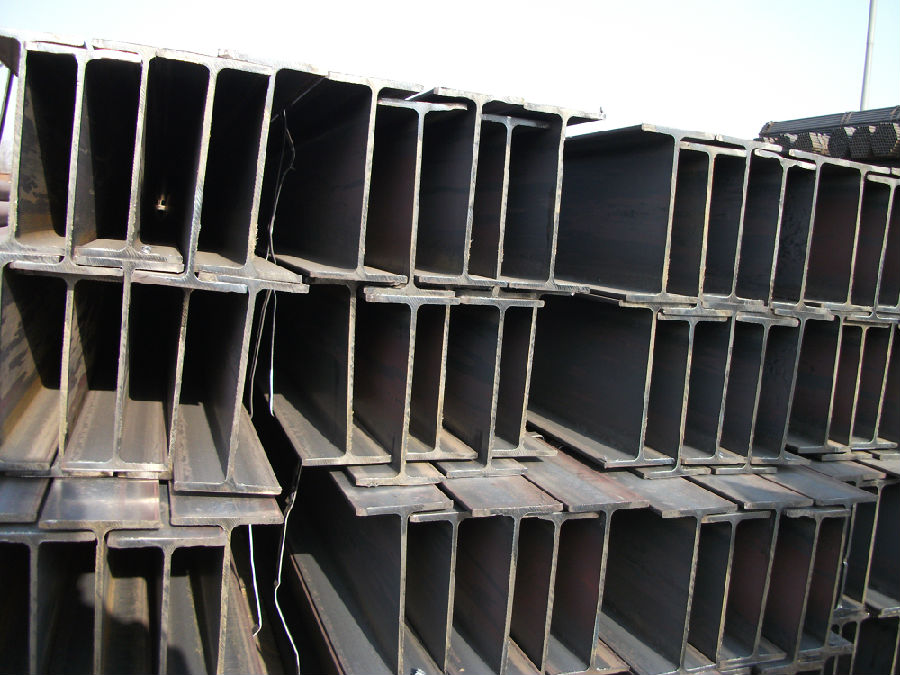
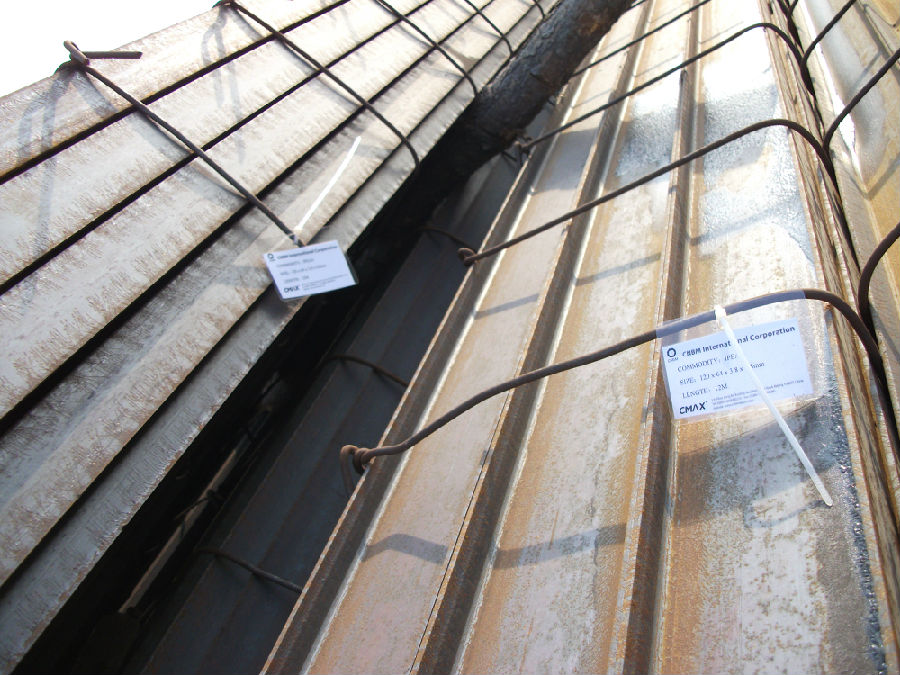
FAQ:
Q1: Why buy Materials & Equipment from OKorder.com?
A1: All products offered byOKorder.com are carefully selected from China's most reliable manufacturing enterprises. Through its ISO certifications, OKorder.com adheres to the highest standards and a commitment to supply chain safety and customer satisfaction.
Q2: How do we guarantee the quality of our products?
A2: We have established an advanced quality management system which conducts strict quality tests at every step, from raw materials to the final product. At the same time, we provide extensive follow-up service assurances as required.
Q3: How soon can we receive the product after purchase?
A3: Within three days of placing an order, we will begin production. The specific shipping date is dependent upon international and government factors, but is typically 7 to 10 workdays.
- Q: Can steel H-beams be used in railway infrastructure projects?
- Yes, steel H-beams can be used in railway infrastructure projects. Steel H-beams offer several advantages that make them suitable for railway infrastructure. Firstly, H-beams are known for their high strength and load-carrying capacity, which is essential for supporting heavy loads in railway tracks, bridges, and other structures. Additionally, steel H-beams have excellent durability and can withstand the constant vibrations and heavy traffic associated with railway systems. Furthermore, steel H-beams can be easily fabricated, making them a cost-effective option for railway infrastructure projects. Overall, the use of steel H-beams in railway infrastructure projects ensures the structural integrity and longevity of the railway system.
- Q: Can steel H-beams be used for cantilever structures?
- Certainly! Cantilever structures can indeed make use of steel H-beams. These structures are specifically designed to incorporate a projecting beam or member that is supported on just one end, while the other end remains free or unsupported. Steel H-beams are widely employed in the realm of construction due to their remarkable strength and ability to bear substantial loads. They are particularly well-suited for cantilever designs as they offer exceptional structural support, effectively minimizing deflection and ensuring overall stability. Nonetheless, it is imperative to take into account the specific requirements of the cantilever structure. In order to determine the appropriate size and strength of the H-beam necessary to support the desired load and span, it is highly recommended to seek guidance from a structural engineer.
- Q: What are the different types of connections used for steel H-beams in bridges?
- Steel H-beams in bridges can be connected in different ways to provide strength, stability, and durability. Some common types of connections are: 1. Welded Connections: The most commonly used connection involves welding the flanges and webs of the H-beams together using high-strength techniques like electric arc or submerged arc welding. These welds offer excellent strength and rigidity. 2. Bolted Connections: Another option is using high-strength bolts to connect the H-beams. Bolted connections are useful when easy disassembly or replacement is required. The H-beams have pre-drilled holes in the flanges and webs, and bolts are inserted and tightened with nuts. Bolted connections provide good strength and can be easily adjusted or replaced. 3. Riveted Connections: Riveted connections, once widely used, have been largely replaced by welded and bolted connections. This method involves inserting heated hot-rivets into pre-drilled holes in the H-beams. As they cool, the rivets contract and create a secure connection. Riveted connections offer excellent strength but require more time and labor to install. 4. Moment Connections: Moment connections are specialized connections used in situations where H-beams need to resist bending forces, such as in continuous beam bridges. These connections allow for the transfer of moments or rotational forces between the H-beams, providing additional stability. Moment connections typically combine welding and bolting methods for optimal load transfer and structural integrity. 5. Splice Connections: Splice connections are used when longer H-beams are needed for bridge construction. Multiple shorter H-beams are connected together to form a longer beam. Splice connections can be achieved through welding or bolting methods, providing continuity and strength throughout the length of the beam. It is important to consider various factors, such as bridge design, load requirements, material availability, and construction methods, when selecting the appropriate connection type for steel H-beams in bridge construction. Consulting with structural engineers and adhering to industry standards and codes is crucial to ensure the right connection type is chosen for each specific bridge project.
- Q: Are steel H-beams compatible with different types of roofing materials?
- Yes, steel H-beams are compatible with different types of roofing materials. The versatility of steel H-beams allows for easy integration with various roofing systems, including shingles, metal panels, tiles, or even green roofs. The strength and durability of steel make it an excellent choice for supporting different roofing materials, ensuring stability and longevity.
- Q: What is the weight-bearing capacity of steel H-beams?
- The weight-bearing capacity of steel H-beams varies depending on their size, shape, and specifications. Generally, H-beams are designed to support heavy loads and have high weight-bearing capacities. It is recommended to consult engineering tables or contact a structural engineer to determine the specific weight-bearing capacity of a particular steel H-beam.
- Q: Are steel H-beams resistant to UV radiation?
- UV radiation can pose a challenge to the resilience of Steel H-beams. Steel as a material can be prone to corrosion and decay if exposed to UV radiation for a prolonged duration. Nevertheless, there exist several techniques to safeguard Steel H-beams against UV radiation. These methods involve applying a protective coating or utilizing weather-resistant materials in the manufacturing process. By implementing these measures, the endurance and lifespan of Steel H-beams can be significantly improved even when faced with UV radiation. To determine the most appropriate approach for protecting Steel H-beams from UV radiation, it is crucial to consider the specific application and environmental conditions.
- Q: What are the different protective coatings available for steel H-beams?
- Steel H-beams have a variety of protective coatings available to enhance durability and prevent corrosion. These coatings are designed to withstand different environmental conditions and offer long-lasting protection. Some commonly used coatings for steel H-beams include: 1. Galvanizing: A widely used coating that involves applying a layer of zinc to create a protective barrier against rust, corrosion, moisture, chemicals, and abrasion. 2. Epoxy Coatings: These coatings provide high-level protection against chemicals, moisture, and UV rays. They are resistant to abrasion and can be applied in different thicknesses based on protection needs. Epoxy coatings are commonly used in industries like oil and gas, marine, and construction. 3. Powder Coating: This dry finishing process applies a layer of powdered resin onto the steel surface. After heating, the powder melts to form a protective layer. Powder coating offers excellent resistance to corrosion, chemicals, and UV rays. It also provides a wide range of color options, making it popular for architectural applications. 4. Paint: Applying a high-quality industrial paint acts as a barrier against moisture, chemicals, and UV rays. It is essential to use paint specifically formulated for steel and apply multiple coats for sufficient protection. 5. Metalizing: This process involves applying a layer of molten metal, like zinc or aluminum, to the steel surface. Metalizing provides excellent corrosion protection and can be applied in different thicknesses depending on the desired level of protection. It is commonly used in harsh environments such as marine and offshore applications. When selecting a protective coating for steel H-beams, factors like intended use, environmental conditions, and budget should be considered. Consulting with a professional or coating specialist can help determine the most suitable coating for specific requirements, ensuring optimal protection and longevity for the steel H-beams.
- Q: How do you connect steel H-beams together?
- Steel H-beams can be connected together in several ways depending on the specific application and load requirements. Here are some common methods for connecting steel H-beams: 1. Welding: Welding is a popular method for connecting steel H-beams. It involves melting the adjacent surfaces of the beams using high heat and then allowing them to cool and solidify, creating a strong bond. Welding provides excellent strength and stiffness, making it suitable for heavy-duty applications. However, it requires skilled welders and can be time-consuming. 2. Bolting: Bolting is another commonly used method for connecting steel H-beams. It involves drilling holes through the flanges or webs of the beams and then using bolts and nuts to secure them together. Bolting offers flexibility, as it allows for easy disassembly and reassembly if necessary. However, it may not provide the same level of strength as welding, especially in applications with high loads. 3. Riveting: Riveting is an older method that involves using metal pins or rivets to connect the steel H-beams. It works by inserting the pins or rivets through pre-drilled holes and then deforming the ends to secure them in place. Riveting can provide good strength, but it is not as common as welding or bolting due to the complexity and time required for installation. 4. Adhesive bonding: In some cases, adhesive bonding can be used to connect steel H-beams. This method involves applying a strong adhesive between the contacting surfaces of the beams and allowing it to cure. Adhesive bonding can provide high strength and stiffness, but it requires careful surface preparation and may not be suitable for all applications. It is important to consider the specific requirements of the project and consult with structural engineers or professionals to determine the most appropriate method for connecting steel H-beams. Additionally, local building codes and regulations may dictate specific requirements for beam connections.
- Q: Can steel H-beams be used in retrofitting or renovation projects?
- Yes, steel H-beams can be used in retrofitting or renovation projects. These beams are commonly employed to reinforce existing structures, provide additional support, or alter the load-bearing capacity of buildings during renovations. Their versatility and strength make them ideal for various retrofitting applications, ensuring structural integrity and safety.
- Q: What are the load distribution characteristics of steel H-beams?
- The shape and design of the beam primarily determine the load distribution characteristics of steel H-beams. H-beams, which are also referred to as I-beams or W-beams, possess a unique cross-sectional shape consisting of two flanges connected by a web. This shape allows for efficient weight distribution along the beam's length and provides outstanding load-bearing capabilities. Supporting heavy loads over long spans is one of the significant load distribution characteristics of steel H-beams. The flanges, located at the top and bottom of the beam, are specifically designed to resist bending and twisting forces. As a result, the beam can carry substantial loads without deflecting excessively. The ratio of the flange width to the web depth also influences the load distribution along an H-beam. A wider flange width in comparison to the web depth leads to a more evenly distributed load, as the flanges are better equipped to withstand lateral forces. Conversely, a narrower flange width relative to the web depth concentrates the load towards the center of the beam. Furthermore, the load distribution characteristics of H-beams can be altered by adjusting the beam's dimensions and material properties. Engineers can customize the load distribution capabilities of H-beams by varying parameters such as flange thickness, web height, and steel grade to meet specific structural requirements. In summary, steel H-beams are renowned for their exceptional load distribution characteristics, making them a sought-after choice in construction and engineering applications that necessitate robust, long-lasting, and efficient load-bearing capabilities.
Send your message to us
JIS Standard Hot Rolled Steel H-beam Bar
- Loading Port:
- Shanghai
- Payment Terms:
- TT or LC
- Min Order Qty:
- 25 m.t.
- Supply Capability:
- 1000 m.t./month
OKorder Service Pledge
OKorder Financial Service
Similar products
Hot products
Hot Searches
Related keywords
